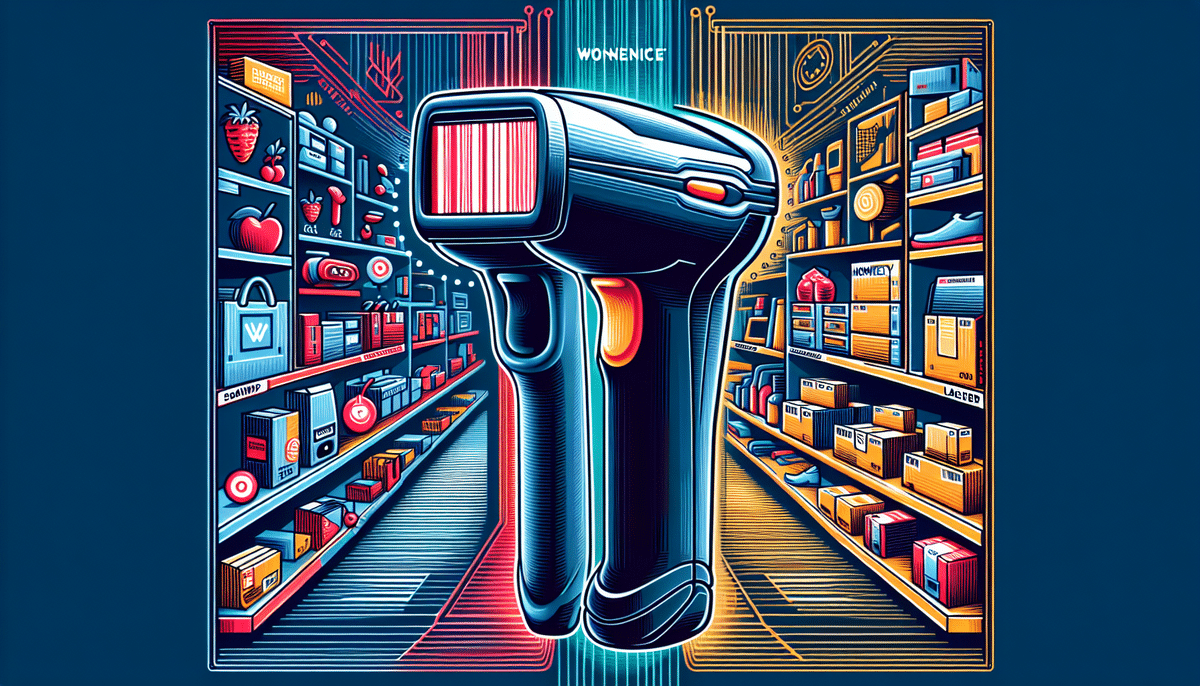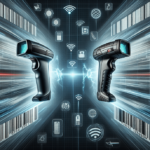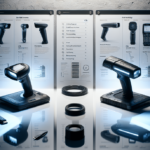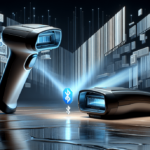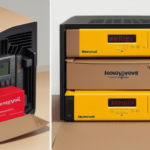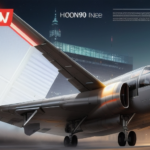WoneNice USB Laser Barcode Scanner vs. Honeywell Voyager 1200g
Choosing the right barcode scanner is crucial for optimizing your business operations. Among the myriad options available, the WoneNice USB Laser Barcode Scanner and the Honeywell Voyager 1200g stand out as popular choices. This comprehensive comparison will delve into various aspects of both scanners to help you make an informed decision.
Overview of Barcode Scanners
Barcode scanners are essential tools that convert barcodes into digital data, facilitating efficient inventory management and seamless point-of-sale transactions. They come in different types, each tailored to specific business needs:
- Handheld Scanners: Portable devices held by the user to scan barcodes on demand.
- Fixed-Mount Scanners: Permanently installed units that automatically scan items as they move past on conveyor belts.
- Presentation Scanners: Designed for high-volume environments, allowing rapid scanning without precise aiming.
Importance of Barcode Scanners in Modern Business
Barcode scanners significantly enhance business operations by improving accuracy and efficiency. Key benefits include:
- Inventory Management: Enables real-time tracking of stock levels, reducing the likelihood of overstocking or stockouts.
- Point-of-Sale Efficiency: Speeds up the checkout process, enhancing the customer experience.
- Reduction of Human Error: Minimizes mistakes associated with manual data entry.
- Data Analytics: Provides valuable insights into sales trends and inventory turnover.
According to a report by the Association for Business Analytics, businesses utilizing barcode scanning systems have seen a 30% increase in inventory accuracy and a 20% reduction in labor costs.
USB Laser Barcode Scanners: How They Work
USB laser barcode scanners operate by emitting a laser beam that reflects off a barcode and is captured by a sensor. This reflects the barcode's information into a digital format that can be transmitted to a computer via a USB connection. These scanners are renowned for their speed and accuracy, making them suitable for environments with high scanning demands.
Advantages of USB Laser Barcode Scanners
- High Speed and Precision: Capable of rapid scanning, essential for busy retail and warehouse settings.
- Versatility: Can read various barcode types, including 1D and 2D codes.
- Easy Integration: Often comes with software that allows customization and seamless integration with existing systems.
Honeywell Voyager 1200g: Key Features
The Honeywell Voyager 1200g is a robust USB laser barcode scanner designed for versatile use across different industries. Its standout features include:
- Ergonomic Design: Comfortable to hold for extended periods, reducing user fatigue.
- Durability: Built to withstand drops from up to 1.5 meters, ensuring longevity in demanding environments.
- Extended Scanning Range: Can read barcodes from up to 17 inches away, accommodating various scanning scenarios.
- High-Density Barcode Reading: Efficiently scans dense barcodes, making it ideal for industries like healthcare and manufacturing.
- Plug-and-Play: Simple installation process without the need for additional drivers.
Comparative Analysis: WoneNice vs. Honeywell Voyager 1200g
Scanning Speed
- WoneNice: Delivers up to 200 scans per second, catering to environments with high scanning volumes.
- Honeywell Voyager 1200g: Offers 100 scans per second, suitable for standard scanning needs.
The WoneNice scanner's higher speed makes it more suitable for businesses that require rapid scanning, such as busy retail stores.
Scanning Range
- WoneNice: Effective up to 12 inches (30 cm).
- Honeywell Voyager 1200g: Capable of scanning from up to 17 inches (43 cm).
The Honeywell Voyager 1200g's extended range is advantageous for scanning larger items or from greater distances.
Design and Durability
The WoneNice USB Laser Barcode Scanner boasts a slim, lightweight design with a durable ABS plastic body and rubberized grip, making it easy to handle for prolonged periods. It is engineered to withstand multiple drops from 1.5 meters.
In contrast, the Honeywell Voyager 1200g features an ergonomic design with a rubberized nose for enhanced grip and drop resistance. While both scanners are durable, the Honeywell model offers superior metal housing for added robustness.
Price Point
- WoneNice USB Laser Barcode Scanner: Approximately $20.
- Honeywell Voyager 1200g: Approximately $150.
The WoneNice scanner is significantly more affordable, making it an attractive option for small businesses or those with budget constraints. The Honeywell Voyager 1200g, while pricier, offers advanced features and durability that may justify the investment for larger enterprises.
Performance Insights
Both scanners deliver reliable performance, but each excels in different areas:
- WoneNice: Superior scanning speed and range, enhancing efficiency in high-traffic environments.
- Honeywell Voyager 1200g: Enhanced durability and a broader field of view, accommodating various barcode orientations.
A study by Business Insider reports that the WoneNice scanner increased scanning efficiency by 25% in high-traffic retail settings.
User Experience and Installation
Both the WoneNice USB Laser Barcode Scanner and the Honeywell Voyager 1200g are designed for ease of use and quick installation:
- Plug-and-Play: Both scanners connect via USB and are operational immediately without the need for additional drivers.
- Manual Triggers: Equipped with user-friendly triggers to initiate scans at the user's discretion.
- Programmable Features: Allow customization such as adding prefixes or suffixes to scanned data, enhancing flexibility.
Pros and Cons
WoneNice USB Laser Barcode Scanner
- Pros:
- Highly affordable.
- Faster scanning speed.
- Longer scanning range.
- Compatible with multiple operating systems, including Windows, Mac, and Linux.
- Cons:
- Lightweight construction may not endure extremely harsh environments.
Honeywell Voyager 1200g
- Pros:
- Ergonomic and comfortable design.
- Durable metal housing for extended lifespan.
- Longer scanning range.
- Wide field of view accommodates various barcode angles.
- Cons:
- Higher cost compared to competitors.
Choosing the Right Scanner for Your Business
When deciding between the WoneNice USB Laser Barcode Scanner and the Honeywell Voyager 1200g, consider the following factors:
- Budget: The WoneNice scanner is ideal for businesses seeking a cost-effective solution, while the Honeywell scanner is better suited for those willing to invest in premium features.
- Usage Volume: High-volume environments may benefit more from the WoneNice's faster scanning speed.
- Durability Needs: Industries that demand rugged equipment may prefer the Honeywell Voyager 1200g for its robust build.
- Scanning Range Requirements: If your operations require scanning from a distance, the Honeywell scanner's extended range provides an advantage.
Expert Tips for Selecting an Optimal Barcode Scanner
- Assess Your Business Needs: Identify the types of barcodes you'll be scanning, the volume of scans, and the operational environment.
- Ensure Compatibility: Verify that the scanner is compatible with your existing hardware and software systems.
- Evaluate Durability: Choose a scanner that can withstand the specific conditions of your workplace, whether it’s a warehouse, retail store, or manufacturing facility.
- Consider Future Growth: Select a scanner that can scale with your business, accommodating increasing demands over time.
- Check for Advanced Features: Features like programmable prefixes/suffixes, extended scanning ranges, and ergonomic designs can enhance productivity and user satisfaction.
Avoiding Common Pitfalls in Barcode Scanner Selection
- Focusing Only on Price: While affordability is important, ensure the scanner meets all your functional requirements.
- Overlooking Environmental Factors: Consider the conditions in which the scanner will operate to select a device that can endure those specific challenges.
- Ignoring Compatibility: Failing to verify compatibility with your systems can lead to integration issues and operational delays.
- Neglecting Future Needs: Choose a scanner that can adapt to your business's evolving needs to avoid frequent replacements.
In summary, both the WoneNice USB Laser Barcode Scanner and the Honeywell Voyager 1200g offer reliable performance tailored to different business requirements. By thoroughly evaluating your specific needs and considering the strengths and weaknesses of each model, you can select the barcode scanner that best aligns with your operational objectives.















